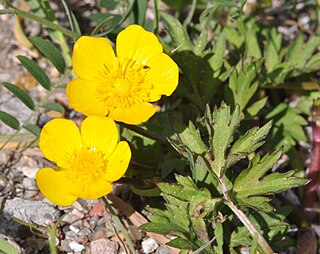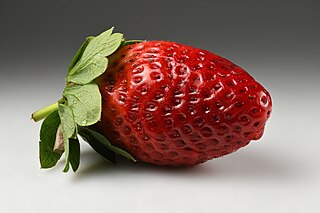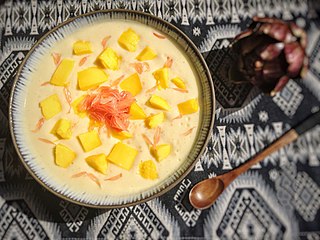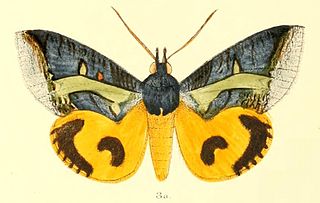
Botany, also called plant science, plant biology or phytology, is the science of plant life and a branch of biology. A botanist, plant scientist or phytologist is a scientist who specialises in this field. The term "botany" comes from the Ancient Greek word βοτάνη meaning "pasture", "herbs" "grass", or "fodder"; βοτάνη is in turn derived from βόσκειν, "to feed" or "to graze". Traditionally, botany has also included the study of fungi and algae by mycologists and phycologists respectively, with the study of these three groups of organisms remaining within the sphere of interest of the International Botanical Congress. Nowadays, botanists study approximately 410,000 species of land plants of which some 391,000 species are vascular plants, and approximately 20,000 are bryophytes.

Flowering plants are plants that bear flowers and fruits, and form the clade Angiospermae, commonly called angiosperms. They include all forbs, grasses and grass-like plants, a vast majority of broad-leaved trees, shrubs and vines, and most aquatic plants. The term "angiosperm" is derived from the Greek words ἀγγεῖον / angeion and σπέρμα / sperma ('seed'), meaning that the seeds are enclosed within a fruit. They are by far the most diverse group of land plants with 64 orders, 416 families, approximately 13,000 known genera and 300,000 known species. Angiosperms were formerly called Magnoliophyta.

Sex is the biological trait that determines whether a sexually reproducing organism produces male or female gametes. Male organisms produce small mobile gametes, while female organisms produce larger, non-mobile gametes. Organisms that produce both types of gametes are called hermaphrodites. During sexual reproduction, male and female gametes fuse to form zygotes, which develop into offspring that inherit traits from each parent.

Robert Anthony Plant is an English singer and songwriter. He was the lead singer and lyricist of the rock band Led Zeppelin from its founding in 1968 until their breakup in 1980; since then he has had a successful solo career, sometimes collaborating with other artists such as Alison Krauss. Regarded by many as one of the greatest singers in rock music, he is known for his flamboyant persona and raw stage performances.

Samlar machu is a Khmer term for a category of sour soups.

Menispermaceae is a family of flowering plants. The alkaloid tubocurarine, a neuromuscular blocker and the active ingredient in the 'tube curare' form of the dart poison curare, is derived from the South American liana Chondrodendron tomentosum. Several other South American genera belonging to the family have been used to prepare the 'pot' and 'calabash' forms of curare. The family contains 68 genera with some 440 species, which are distributed throughout low-lying tropical areas with some species present in temperate and arid regions.

Grass jelly, also known as leaf jelly or herb jelly, is a jelly-like dessert originating from China. It is commonly consumed in East Asia and Southeast Asia. It is created by using Chinese mesona and has a mild, slightly bitter taste. Grass jelly was invented by the Hakka people who historically used the food to alleviate heat stroke after long days working in the field. The dish was introduced to Southeast Asia by the Chinese diaspora. It is served chilled, with other toppings such as fruit, or in bubble tea or other drinks. Outside Asia, it is sold in Asian supermarkets.

The garden strawberry is a widely grown hybrid species of the genus Fragaria, collectively known as the strawberries, which are cultivated worldwide for their fruit. The fruit is widely appreciated for its characteristic aroma, bright red color, juicy texture, and sweetness. It is consumed in large quantities, either fresh or in such prepared foods as jam, juice, pies, ice cream, milkshakes, and chocolates. Artificial strawberry flavorings and aromas are also widely used in products such as candy, soap, lip gloss, perfume, and many others.

Tiliacora triandra is a species of flowering plant native to mainland Southeast Asia and used particularly in the cuisines of northeast Thailand and Laos. In the Isan dialect of Lao, the language of northeastern Thailand, it is called bai yanang or bai ya nang, or simply yanang or ya nang (ย่านาง). In Laos, it is also called bai yanang (ໃບຢານາງ). In Khmer, it is called voar yeav (វល្លិយាវ). It is a climbing plant with deep green leaves and yellowish flowers, tolerating only very mild frost.

A flower, sometimes known as a bloom or blossom, is the reproductive structure found in flowering plants. Flowers produce gametophytes, which in flowering plants consist of a few haploid cells which produce gametes. The "male" gametophyte, which produces non-motile sperm, is enclosed within pollen grains; the "female" gametophyte is contained within the ovule. When pollen from the anther of a flower is deposited on the stigma, this is called pollination. Some flowers may self-pollinate, producing seed using pollen from the same flower or a different flower of the same plant, but others have mechanisms to prevent self-pollination and rely on cross-pollination, when pollen is transferred from the anther of one flower to the stigma of another flower on a different individual of the same species.
Tiliacora lehmbachii is a species of plant in the family Menispermaceae. It is found in Cameroon and the Democratic Republic of the Congo. Its natural habitat is subtropical or tropical moist lowland forest. It is threatened by habitat loss.

Chè is any traditional Vietnamese sweet beverage, dessert soup or stew, or pudding. Chè includes a wide variety of distinct soups or puddings. Varieties of Chè can be made with mung beans, black-eyed peas, kidney beans, tapioca, jelly, fruit, and coconut cream. Other types are made with ingredients such as salt, aloe vera, seaweed, lotus seed, sesame seed, sugar palm seeds, taro, cassava and pandan leaf extract. Some varieties, such as chè trôi nước, may also include dumplings. Chè are often prepared with one of a number of varieties of beans, tubers, and/or glutinous rice, cooked in water and sweetened with sugar. In southern Vietnam, chè are often garnished with coconut creme.

Plants are the eukaryotes that form the kingdom Plantae; they are predominantly photosynthetic. This means that they obtain their energy from sunlight, using chloroplasts derived from endosymbiosis with cyanobacteria to produce sugars from carbon dioxide and water, using the green pigment chlorophyll. Exceptions are parasitic plants that do not contain chlorophyll, and obtain their energy from other plants.

Eudocima materna, the dot-underwing moth, is a moth of the family Erebidae found in widespread parts of the world, mainly in tropical Asia extending to New Guinea and Australia as well as in Africa. Reports from the United States, Canada and the French Antilles are now considered to be Eudocima apta. The species can be differentiated from other Eudocima moths by the presence of small central black dot in each hindwing. The species was first described by Carl Linnaeus in his 1767 12th edition of Systema Naturae.

Eudocima homaena is a moth of the family Erebidae first described by Jacob Hübner in 1816. It is found in the Indian subregion, Sri Lanka, Myanmar, Taiwan, the Nicobars, Peninsular Malaysia, Borneo, the Philippines and on Christmas Island. It is a major pest on orange plants.
Blastobasis acirfa is a moth in the family Blastobasidae. It is found in Kenya. The habitat consists of coastal lowlands and the western highlands.
The Kafa Biosphere Reserve is located in the Kafa Zone of Ethiopia approximately 460 km southwest of Addis Ababa. The Bonga National Forest Priority Area partly forms the southern boundary of the Biosphere Reserve, whilst the eastern boundary follows the Adiyo Woreda with the Gojeb River and Gewata-Yeba (Boginda) National Forest Priority Area forming the northern boundary.
Tuticorin Raghavachari Govindachari FNA, FASc (1915–2001), popularly known as TRG, was an Indian natural product chemist, academic, institution builder and the principal of Presidency College, Chennai. He was known for his studies on the synthesis of isoquinolines and phenanthridines and his contributions in elucidating the structure of several plant constituents. He was an elected fellow of the Indian Academy of Sciences and the Indian National Science Academy and was the nominator of Robert Burns Woodward who won the 1965 Nobel Prize in Chemistry. The Council of Scientific and Industrial Research, the apex agency of the Government of India for scientific research, awarded him the Shanti Swarup Bhatnagar Prize for Science and Technology, one of the highest Indian science awards, in 1960, for his contributions to chemical sciences, making him the first recipient of the award in the chemical sciences category.
Bamboo shoot salad is a traditional Lao / Northeastern Thai (Isan) dish.














